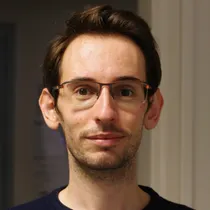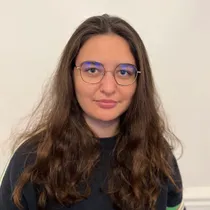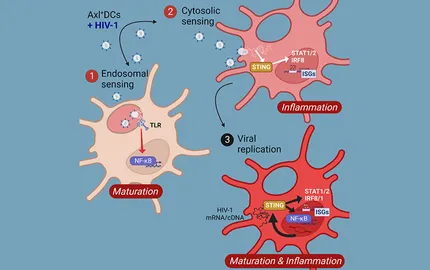Presentation

Myeloid cells are highly plastic cells endowed with an ever-growing list of functions in numerous organs. Moreover, they are pivotal in innate immunity and represent the most ancient form of cellular immunity against pathogens and tumor cells.
Our general goal is to decipher the molecular mechanisms that regulate the interplay between myeloid cells, viruses, and tumors. The lab's on going studies are currently focused on the following two axes.
1. Macrophages and viruses: a complex and instructive relationship
In many tissues and mucosa, macrophages mount the first line of defense against a large diversity of viruses and constitute an efficient arm of our innate immunity. Paradoxically, many viruses and pathogens succeed to replicate in macrophages. The lab currently focuses on the following questions. i) How do myeloid cells sense viruses, and how is this sensing regulated? ii) How can viruses replicate in myeloid cells despite numerous cellular defenses and the response they elicit? We have now extended our research to viruses other than HIV-1 to understand how macrophages cope with many pathogens and to decipher unknown molecular mechanisms of defense.
Figure 1: Confocal immunofluorescence microscopy of primary HIV-2-infected human macrophages. Actin (phalloidin in purple), nucleus (DAPI in turquoise blue), HIV-2 (in yellow). See the numerous syncytia induced by HIV-2.
Figure 2: Confocal microscopy imaging of primary human macrophages infected with HIV-1 (green) and transduced with Life-act cherry (red). See the compartments where virions accumulate in green and the numerous podosomes in red.
2. Analysis of macrophage regulation and function in solid tumors
Macrophages are generally abundant in solid tumors, exerting many pro-tumoral activities. A complex network of interactions occurs within the tumor microenvironment between macrophages and other cell populations, such as stromal cells and T lymphocytes, that remains to be deciphered at the molecular and spatial levels.
We are studying how tumor and myeloid cells impact each other in minimalistic models that are used to mathematically model their behavior and learn more about the nature of their interactions. Our 3D in vitro models, analyzed in real-time, allow for the studying and manipulating the interplay between myeloid, tumor cells, and cytotoxic T cells. In this context, we analyze immunosuppressive myeloid cells and are developing ways to manipulate macrophages to enhance the anti-tumor immune response for therapeutic purposes.
Figure 3: 3D imaging after clearing of spheroids by epifluorescence microscopy. 2500 GFP lung tumor cells (in purple) were cultured for several days. The nuclei are stained with DAPI (in blue). The clearing procedure makes it possible to image the entire spheroid without loss of signal inside.
Figure 4: 3D imaging after clearing of spheroids by epifluorescence microscopy. 2500 lung tumor GFP cells were cultured for several days in the presence of macrophages (in purple). The nuclei are stained with DAPI (in blue).
Collaborations
Within INSERM U932
- Helene Salmon : Crosstalk between myeloid cells and stroma in lung cancers
- Ana-Maria Lennon : Biomechanical activation of macrophages
- Enzo Poirier : Macrophage resistance to viral infections
- Nicolas Manel : Molecular interactions at the Capsid level of HIV-1 and -2
- Eliane Piaggio : Manipulations of the anti-tumor immune response
Abroad
- Miriam Merad Icahn School of Medicine at Mount Sinai, New York, NY, USA
- Florent Ginhoux Singapore Immunology Network (SIgN), A*STAR, Singapore



















